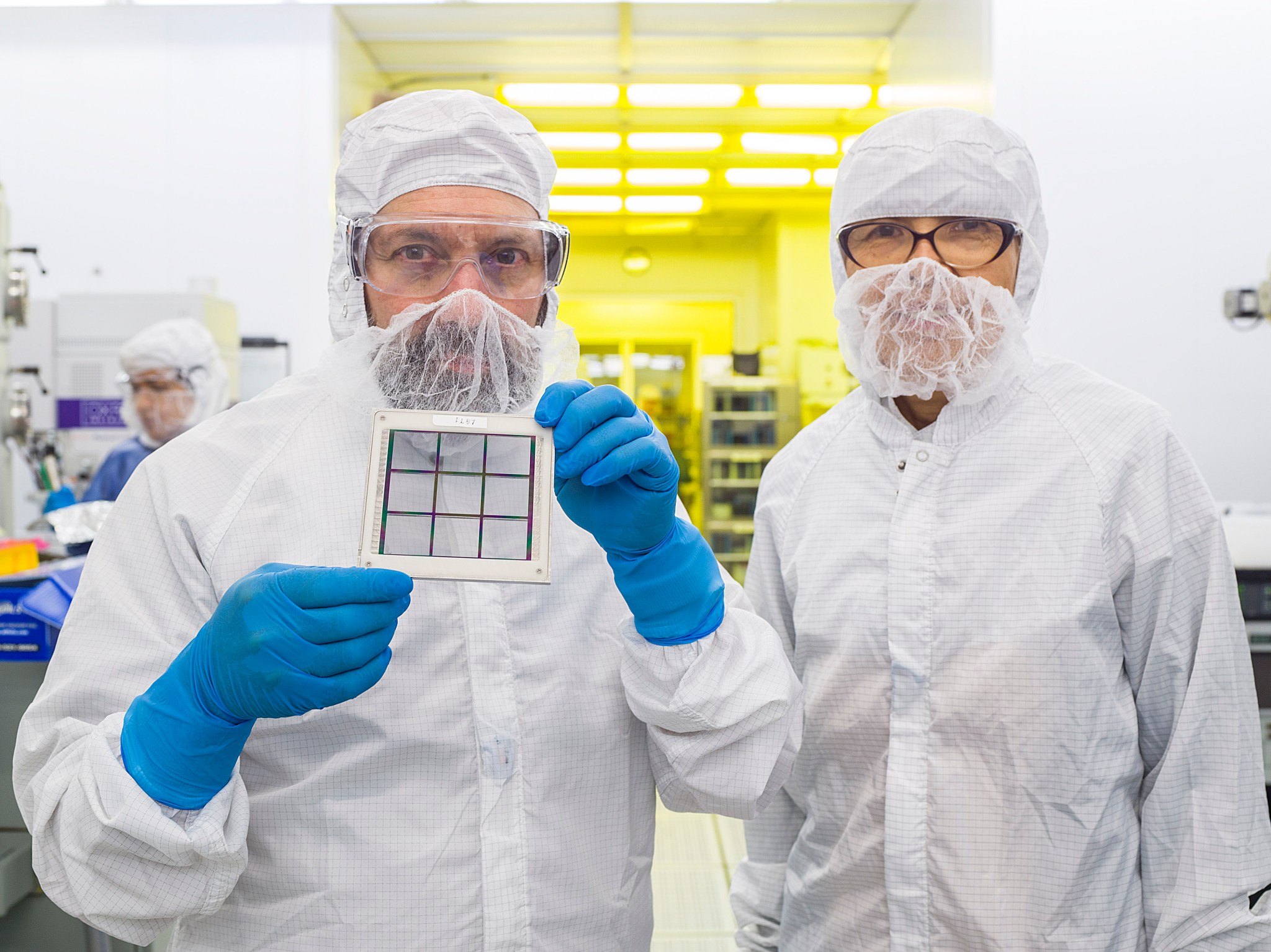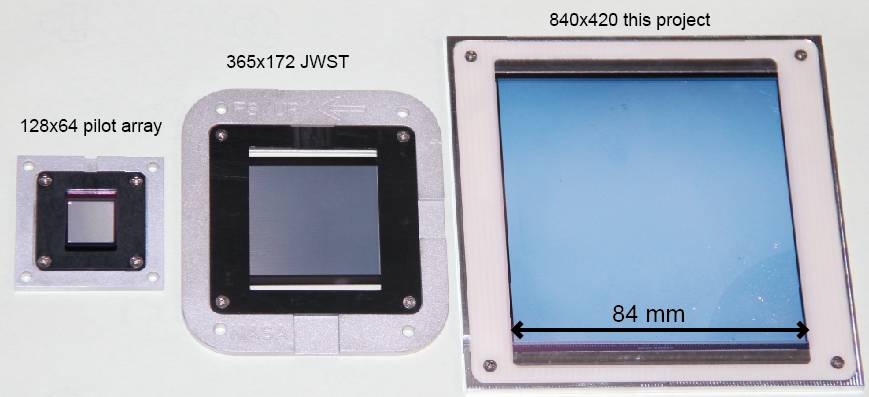NASA scientists plan to demonstrate a revolutionary technology for studying hundreds of stars and galaxies at the same time — a new capability originally created for NASA’s James Webb Space Telescope.
The technology, called the Next-Generation Microshutter Array (NGMSA), will fly for the first time on the Far-ultraviolet Off Rowland-circle Telescope for Imaging and Spectroscopy, or FORTIS, mission on October 27. The array includes 8,125 tiny shutters, each about the width of a human hair, that open and close as needed to focus on specific celestial objects.
Led by Johns Hopkins University Professor Stephan McCandliss, FORTIS will launch aboard a Black Brant IX sounding rocket from White Sands Missile Range in New Mexico to study the star-forming galaxy, Messier 33, or M33. Located about 3 million light-years from Earth in the Triangulum constellation, M33 is the third largest member of the Local Group of galaxies that includes our own Milky Way and Andromeda.
“FORTIS needed our new microshutter technology for science. We benefit from a test platform to advance the readiness of this design for use in space. It’s a great synergy,” said Matt Greenhouse, a scientist at NASA’s Goddard Space Flight Center in Greenbelt, Maryland. Greenhouse and his colleague, Goddard technologist Mary Li, are advancing the technology with support from NASA’s Strategic Astrophysics Technology (SAT) program.
The sounding rocket mission is expected to address a wide range of risks associated with operating this new technology. It will also help lay the foundation for even larger arrays that future astrophysics missions will need.
Divining Structures Surrounding Emerging Hot Star Clusters
M33 is a spiral-disk galaxy littered with clusters of massive hot stars that have emerged within the past few million years from collapsing natal clouds of cold gas and dust. To study these bright clusters, which emit copious amounts of light at ultraviolet wavelengths, the FORTIS telescope will first locate the brightest clusters with its imager and an on-the-fly targeting algorithm will close all the tiny shutters except those coincident with the bright targets.
This will allow light to flow to the spectrograph where it will be broken into component wavelengths to reveal details about the physical conditions of the clusters and their surrounding material.
The microshutter technology gives scientists the ability to produce multiple spectra at once. This capability improves productivity on both sounding rocket missions, which offer only six minutes of observing time, or large space-based observatories, which can take up to a week to observe faint, far-away objects and gather enough light to obtain good spectra. With observing time at a premium, the ability to gather light from multiple objects at once is paramount.
Webb, scheduled to launch in 2021, will carry NASA’s first-generation microshutter technology — four 365-by-172 microshutter arrays that together total 250,000 shutters. They will allow Webb to obtain spectra of hundreds of objects simultaneously.
What distinguishes the next-generation array on FORTIS from the one flying on Webb is how the shutters are opened and closed. Webb’s arrays employ a large magnet that sweeps over the shutters to activate them. However, as with all mechanical parts, the magnet takes up space and adds weight. Furthermore, magnetically activated arrays can’t be easily scaled up in size. As a result, this older technology is at a disadvantage for supporting future space telescopes larger than Webb.
Magnet Eliminated
To accommodate future missions, Goddard’s microshutter-development team eliminated the magnet. The shutters in the pilot 128-by-64 array that will fly on FORTIS open and close through electrostatic interactions. By applying an alternating-current voltage to electrodes placed on the frontside of the microshutters, the shutters swing open. To latch the desired shutters, a direct current voltage is applied to electrodes on the backside.
Without a magnet, the next-generation array can be dramatically scaled up in size — and that’s precisely what the team is attempting to accomplish. Particularly, Greenhouse and Li are using advanced manufacturing techniques to create a much larger, 840-by-420 array equipped with 352,800 microshutters, dramatically increasing an instrument’s field of view.
“The array that is flying on FORTIS is a technology development prototype for the big one,” Greenhouse said.
Other Sciences Could Benefit
Next-generation astrophysics missions aren’t the only potential beneficiary of the magnet-free array. Heliophysicist Sarah Jones is considering implementing the FORTIS-type array on a sounding rocket mission called Loss Through Auroral Microburst Precipitation, or LAMP. LAMP will for the first time directly measure microbursts in pulsating aurorae, colorful light shows that occur 60 miles above Earth in a ring around the magnetic poles.
The technology could also greatly assist scientists’ efforts to better understand the Sun’s influence on Earth. By opening one shutter at a time, Jones said she could measure particle velocity in Earth’s upper atmosphere and determine in which direction upper atmospheric winds are blowing. Scientists are interested in obtaining these measurements because these winds can create an atmospheric drag on low-Earth-orbiting satellites.
“We want to use this technology as soon as we can and are excited to use it,” Jones said. “We haven’t measured these winds directly in 30 years.”
Jones’s enthusiasm is understandable, Greenhouse said. “Everyone wants this technology,” he said.
For more Goddard technology news, go to: https://www.nasa.gov/wp-content/uploads/2019/11/fall_2019_final_web_version.pdf?emrc=7fcd63
By Lori Keesey
NASA’s Goddard Space Flight Center



























